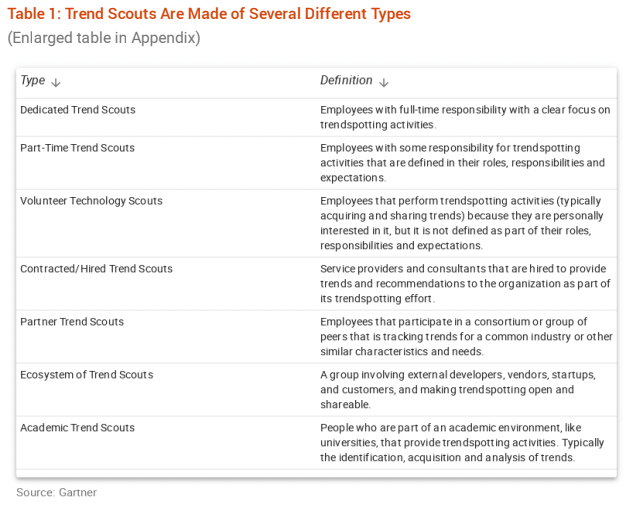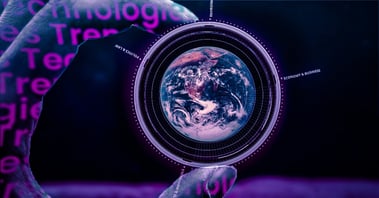A continuous foresight mindset and a comprehensive analytical framework are imperative to trendspotting. The personnel involved in the trendspotting process are also crucial to successfully identifying and evaluating trends that could enhance a company’s innovation strategy.
The role of the leader
Enterprise architects and technology innovation leaders, including CTOs, are challenged to predict how trends and disruptions might affect their organization's business model in the Future and are best-placed to lead trendspotting activities and put together a team of scouts. Gartner states that the "leader also must ensure this aligns to your organization's unique technology adoption persona".
At ITONICS we have a set of key pillars that we believe leaders must commit to in any innovation activity in order to align their teams to the wider strategic relevance of the trendspotting process.
- Empowerment: Trendspotting teams need to have clear lines of authority to act decisively with agility and speed. Leaders need to provide their team members with the requisite resources to undertake their trendspotting effectively whilst ensuring that the innovation process does not adversely affect current business as usual activities.
- Accountability: After establishing roles and responsibilities, leaders can determine clear lines of accountability to innovation teams with a sense of ownership and adequate support throughout the trendspotting process.
- Follow-through: Leaders of the trendspotting process need to ensure that after the trendspotting process, decisions are made strategically, supporting the integration of innovation projects and initiatives safely into the business, mitigating risk, and relying on clear criteria to advocate for actions to be taken.
Understanding the different types of trend scouts
The trendspotting team should be composed of internal resources (across the organization) and leverage partners, ecosystems, and academic institutions. These resources will help develop a more diverse team and develop more granular analyses when it comes to the different TAPESTRY areas.
Gartner has identified seven types of trend scouts. Table 1 below details each scout type and its function in the trendspotting process.

Develop the team
Skills and training are vital to the trendspotting process: leaders may identify internal employees who could be of great help to the trendspotting process but require upskilling to adequately perform their role. Alternatively, as the process unfolds, some members may need to learn along the way, realizing in the scouting process that they need to develop additional competencies.
In developing the team, leaders need to discern which skills and characteristics require skills training and which require more mentorship and interpersonal engagement. For example, a team member may benefit from undertaking a short course on design thinking. In contrast, another member could better understand the benefits of emotional intelligence by engaging with other trend scouts more experienced in honing that social skill.
Two questions that leaders should ask themselves are:
- What qualities does the team need to have before the process starts?
- What competencies need to be learned along the way?
Table 2 below shows the different skills and characteristics required for effective trendspotting.
Establish a consistent rating system for the team
The Tapestry Framework can guide teams on which external signals of change and north star metrics they are looking to prioritize. This, in conjunction with internal assessment variables such as strategic fit, business relevance and internal capabilities, ensure that the technologies are evaluated effectively, and each team member has a voice in determining their strategic fit.
At ITONICS, we provide rating criteria for technologies such that organizations are on the same page about the strategic fit of each technology.
The rating criteria for emerging technologies are as follows:
- Scope
- Potential Impact
- Complexity
- Technology Readiness Level (TRL)
The rating criteria for trends are as follows:
- Scope
- Potential Impact
- Time to Market Impact
- Adoption Stage



/Assets%20and%20Heros/nav-thumbnail-Gartner.webp?width=150&name=nav-thumbnail-Gartner.webp)








